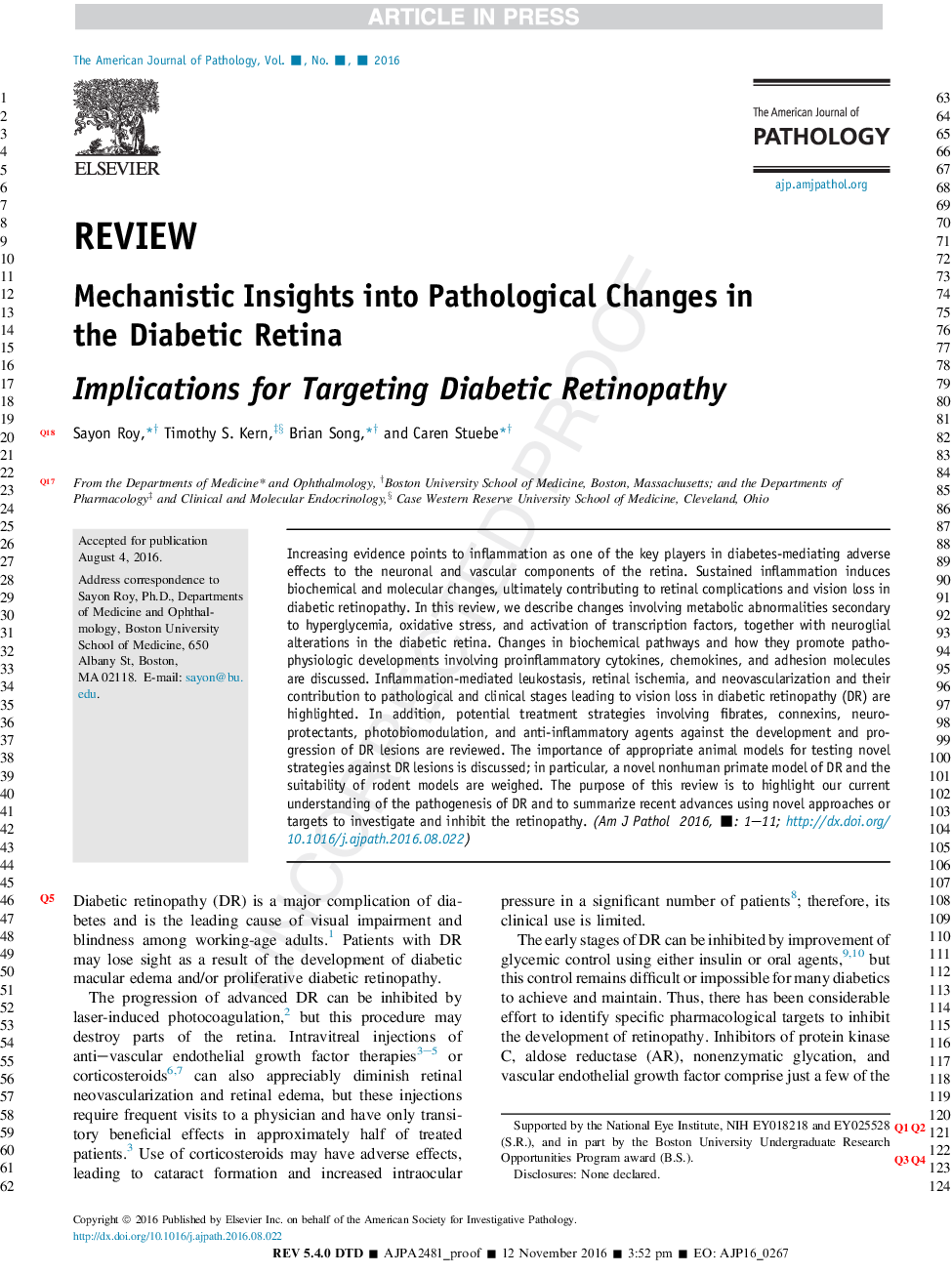| Article ID | Journal | Published Year | Pages | File Type |
|---|---|---|---|---|
| 5596132 | The American Journal of Pathology | 2017 | 11 Pages |
Abstract
Increasing evidence points to inflammation as one of the key players in diabetes-mediating adverse effects to the neuronal and vascular components of the retina. Sustained inflammation induces biochemical and molecular changes, ultimately contributing to retinal complications and vision loss in diabetic retinopathy. In this review, we describe changes involving metabolic abnormalities secondary to hyperglycemia, oxidative stress, and activation of transcription factors, together with neuroglial alterations in the diabetic retina. Changes in biochemical pathways and how they promote pathophysiologic developments involving proinflammatory cytokines, chemokines, and adhesion molecules are discussed. Inflammation-mediated leukostasis, retinal ischemia, and neovascularization and their contribution to pathological and clinical stages leading to vision loss in diabetic retinopathy (DR) are highlighted. In addition, potential treatment strategies involving fibrates, connexins, neuroprotectants, photobiomodulation, and anti-inflammatory agents against the development and progression of DR lesions are reviewed. The importance of appropriate animal models for testing novel strategies against DR lesions is discussed; in particular, a novel nonhuman primate model of DR and the suitability of rodent models are weighed. The purpose of this review is to highlight our current understanding of the pathogenesis of DR and to summarize recent advances using novel approaches or targets to investigate and inhibit the retinopathy.
Related Topics
Health Sciences
Medicine and Dentistry
Cardiology and Cardiovascular Medicine
Authors
Sayon Roy, Timothy S. Kern, Brian Song, Caren Stuebe,
